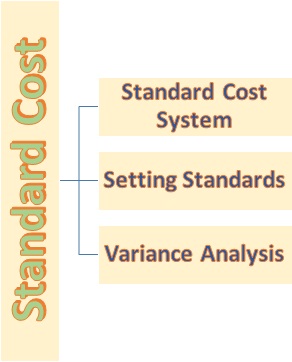Variance Analysis
Variance is the difference between the actual costs and the standard costs. Variance analysis is the analysis of the deviations of performance from the organization’s set standards.Variances associated with direct labor
Variances related with direct labor incorporates the cost of labor or hourly rate and efficiency of labor. The two variances related to direct labor are labor rate variance and labor efficiency variance.Labor rate variance = Actual Labor Hours X (Standard Rate − Actual Rate)
Labor Efficiency Variance = Standard Hourly Rate X (Standard Hours − Actual Hours)
Variances associated with direct materials
Variances related to direct materials incorporates the price of material and the quantity of materials. The two variances that are associated with direct materials are materials price variance and materials quantity variance.Materials Price Variance = Actual Quantity used X (Standard Price − Actual Price)
Materials Quantity Variance = Standard Price X (Standard Quantity − Actual Quantity)
Variances associated with manufacturing overhead costs
Variances related to the manufacturing overhead incorporates overhead spending and overhead volume. The two types of variances that are associate with manufacturing overhead are overhead spending variance and overhead volume variance.
Overhead Spending variance = Actual factory overhead − Budgeted allowance based on actual hours worked
Overhead Volume Variance = Budgeted Allowance Based on Standard Hours Allowed − Overhead charged to production
Making decisions based on variance
Managers evaluate performance using variance analysis. This involves calculating the variances and comparing the variances with the budgeted or standard costs.
It is worth noting that there might be other nonfinancial factors that may impact the decisions of manager or the evaluation of performance. However, we are concentrating ourselves in understanding how variance analysis will be useful and helpful to the management’s decision making process and performance evaluation.
The words favorable and unfavorable are mostly used when performing variance analysis.
1 − When the variance is positive, it is considered favorable
2 − When the variance is negative, it is considered unfavorable

